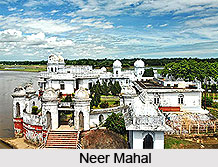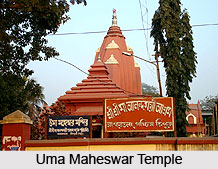 Tourism in Agartala defines the nature tourism sites, leisure tourism sites and the pilgrimage tourism sites. The history of Agartala also defines its tourism sectors. Some of the tourist important sites in Agartala are Ujjayanta Palace, Maharaja Bir Bikram College, Jagannath temple, Umamaheswar temple, Rose Valley Amusement Park and many other places, which are the centre of attraction of this place in North eastern part of India.
Tourism in Agartala defines the nature tourism sites, leisure tourism sites and the pilgrimage tourism sites. The history of Agartala also defines its tourism sectors. Some of the tourist important sites in Agartala are Ujjayanta Palace, Maharaja Bir Bikram College, Jagannath temple, Umamaheswar temple, Rose Valley Amusement Park and many other places, which are the centre of attraction of this place in North eastern part of India.
Maharaja Bir Bikram College
Maharaja Bir Bikram College of Tripura University is a prime tourist importance as this college has the bird sanctuary within. In this college, there exists a football ground, international cricket stadium and the picturesque lush landscapes and serene natural lakes.
Ujjayanta Palace
Ujjayanta Palace is one of the most important tourist attractions in Tripura. Ujjayanta Palace was converted to state legislative assembly and now into a museum. This palace is situated in the area of Palace Compound which is one of the eye catching attractions in the state. It is a former royal palace in Agartala, the capital of the Indian state of Tripura, and also served as the meeting place of the Tripura Legislative Assembly until 2011. The area has decoded from the ruling landmark of the kings to the citizens of Tripura. The name Ujjayanta Palace was given by the Noble Laureate Rabindranath Tagore, who visited the state of Tripura quite a certain amount of times. Maharaja Bir Bikram was the last king of Tripura who ruled the state and was also the last king who stayed in his house in the palace.

Jagannath Temple
Jagannath temple is one of the Hindu temple of Vaishnava schools of thought in Agartala. This temple is dedicated to the Hindu Gods Lord Jagannath, Balabhadra and Subhadra. Jagannath temple was built in the 19th century by then Maharaja of Tripura, Maharaja Radha Kishore Manikya.
Umamaheswar Temple
Umamaheswar Temple is the Hindu temple of Shaiva and Shakti principles of Hinduism.
Venuban Buddha Vihar
Venuban Buddha Vihar is located at a distance of around 2 kilometres inside the city of Agartala. From the City centre is located the Venuban Vihar where a Buddha shrine houses a metal idol of Lord Buddha. The idol was primitively created in Burma now called Myanmar and was later transported to Venuban Vihar for installation into this shrine.
Other important places in Agartala are Krishna Mandir, Puratan Agartala (Old Agartala), Malancha Niwas, which was the house of Rabindranath Tagore, Rose Valley Amusement Park at Amtali, Agartala City Centre and many other places.



















